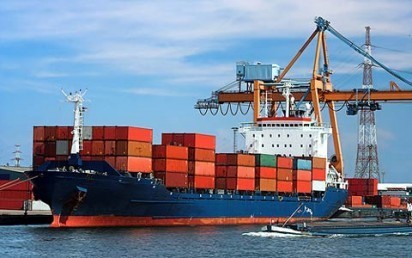
Cargo volumes in South African ports on the rise
PREDICTIONS as to how last year would end for the port of Durban proved reasonably accurate. Containerized cargo, which always attracts the most attention in the port and for the good reason of Durban having the premier container terminal in sub-Saharan Africa, finished with a throughput of 2.98million TEU (twenty foot container equivalents) – up from the 2.69million in 2017.

That’s an increase of 276000 TEU for the year or just over 10%, which will prove very encouraging to Transnet Port Terminals (TPT). Nationally the increase on containers was
5.3% with the total for all ports reaching 4.833million TEU.Total cargo throughput involving all products for Durban was 83.161million tons, up from the 78.106million tons of 2017 (6.47%). Nationally the figures were 294.29million tons, an increase of 1.33%. on the 290.428million tons in 2017.
The number of ships arriving in our ports continues to decline, although this is not reflective of declining cargo volumes but of the use of much larger ships, in particular container vessels.
Nationally the number of ship calls in South African ports declined to 9202, down from 9821 in 2017. As recently as in 2014 and 2015 the total for all ports was over 12000 ships.
In Durban, the number of ship calls has dropped to 3061 ships with a gross tonnage of 114375272-gt. In 2017 the ship number was 3323 vessel calls while in 2014 it was just on 4 000 vessels.
The port of Richards Bay statistics make an equally interesting study. The port volumes increased to 103.55million tons, up from 99.984million tons in 2017 – an extra 3.566million tons or 3.56%. This was despite the volume of coal being exported through Richards Bay Coal Terminal last year having been 3million tons lower than in 2017 at 73.47million tons. What’s of special interest from this is that the port handled just over 30million tons of cargo over and above coal exported through RBCT.
Some of this would have been coal and other ores through the port’s own bulk terminals – private and TPT managed. Three million tons was in breakbulk – a significant amount in itself and more importantly, almost entirely for export. The balance was in bulk cargo of various commodities including liquid bulk which made up just on 9million tons of that total, again all mainly for export.
Richards Bay can truly be described as an export port and in that sense of great value to South Africa.
Looking briefly at the performance of RBCT where the terminal failed to reach its target of 77million tons – being 4% down on the 2017 figure, this was put down to a weaker global demand, with RBCT management stressing that everything railed to the port was exported.
The number of trains delivering the coal averaged 26 a day, down by one a day in 2017.
The number of trains may not appear so impressive until you consider that each train consists of 200 wagons loaded to a total of 20800 tons and hauled along a 580km route from Mpumalanga province to the port along a double-track electrified line. Despite the occasional problem the coal line is regarded internationally as a world leader among heavy-haul railways.
The coal business unit responsible for the Richards Bay rail operation of Transnet Freight Rail (TFR) accounts for over 60% of all TFR revenue.
http://bit.ly/2Sa0zesfrom Tumblr http://bit.ly/2t8D5aF
via IFTTT
No comments:
Post a Comment
Finish Reading ? Make Your Comment Now..!